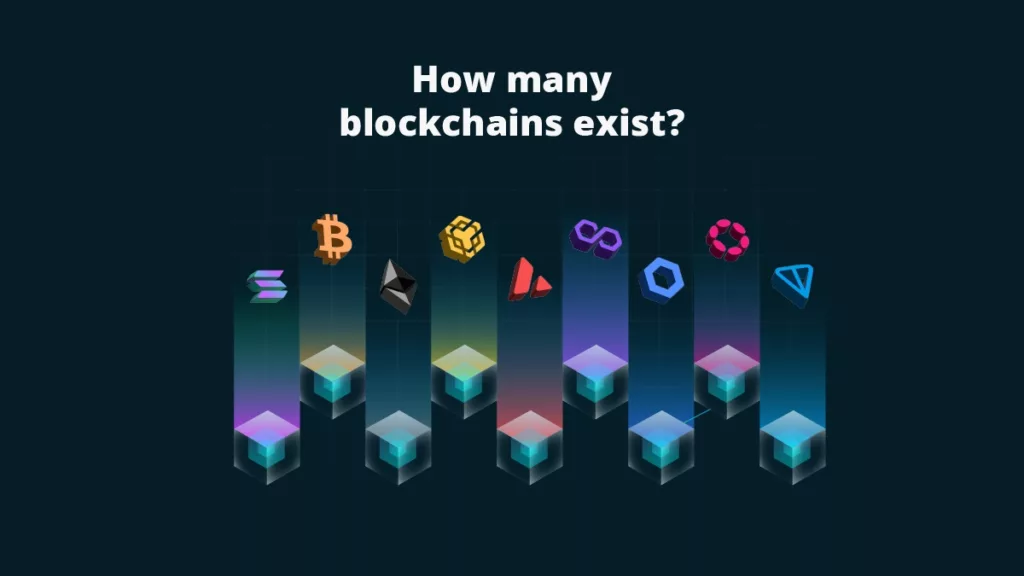Blockchain technology has emerged as a revolutionary force in today’s digital landscape, redefining how we conduct transactions. Blockchain is a decentralized ledger system that enables secure, transparent, and unchangeable record-keeping. Unlike traditional databases, blockchain operates on a distributed network, where transactions are verified by a majority view rather than a central authority. This blog delves into the fundamental principles of blockchain, exploring its applications, benefits, and potential for reshaping industries across the globe.
What is Blockchain, in simple words?
Blockchain is a type of technology that stores information in a unique way. Think of it like a digital ledger or record book that’s shared across a network of computers.
What makes blockchain special is that once information is added to this ledger, it’s extremely hard to change it.
Each new piece of information, or “block,” is linked to the previous one, forming a chain of blocks — hence the name “blockchain.” This technology is most famous for its use in cryptocurrencies like Bitcoin, but it has many other potential applications beyond just money, such as tracking goods in supply chains or storing medical records securely. Overall, blockchain is all about creating a secure and transparent way to record and share information across a network.
Who invented blockchain, and when did it happen?
Blockchain technology was invented by an anonymous person or group of people using the name Satoshi Nakamoto in 2008. Nakamoto introduced blockchain as the underlying technology behind Bitcoin, the first decentralized cryptocurrency. The concept of blockchain was outlined in a whitepaper titled “Bitcoin: A Peer-to-Peer Electronic Cash System,” published in October 2008. This paper introduced the idea of using a decentralized network of computers to verify and record transactions securely without the need for a central authority like a bank. Since then, blockchain has evolved beyond cryptocurrencies, finding applications in various industries due to its transparent, secure, and change-resistant nature.
Read More: A Deep Dive Into Bitcoin And Cryptocurrency
What are the different types of blockchains?
There are four types of blockchains:
1. Public Blockchains
These are open networks where anyone can participate, view, or validate transactions. Public blockchains are decentralized and permissionless, meaning no single entity controls the network, and anyone can join and participate in the consensus process. Examples include Bitcoin and Ethereum.
2. Private Blockchains
In contrast to public blockchains, private blockchains are operated by a single organization or a group of known entities. Access to these blockchains is restricted, and participants require permission to join and access the network. Private blockchains are often used within enterprises for specific use cases such as supply chain management or internal record-keeping. Hyperledger is an example of a Private blockchain.
3. Hybrid Blockchains (Consortium or Federated)
These blockchains are semi-decentralized networks where multiple organizations or entities share control over the blockchain. This means that they contain features from both centralized and decentralized systems. Participants in a consortium blockchain typically have predefined roles and permissions. This type of blockchain is often used in industries where multiple organizations need to collaborate and share data securely while maintaining some level of control over the network. Examples include R3 Corda and Energy Web Foundation.
The terms “hybrid blockchains” and “consortium blockchains” are often used interchangeably to describe similar concepts, but they can have slightly different distinctions depending on context. Generally:
Hybrid Blockchains: This term typically refers to blockchains that combine elements of both public and private blockchains. A hybrid blockchain may leverage aspects of decentralization from public blockchains while incorporating controlled access and permissions similar to private blockchains. The term “hybrid” underscores blending characteristics from different blockchain types.
Consortium Blockchains: This term specifically refers to blockchains where multiple organizations or entities participate in maintaining and governing the network. A consortium blockchain is a type of private blockchain where the consensus process is controlled by a predefined group of participants (consortium members) rather than a single entity. Consortium blockchains are used in scenarios where collaboration among trusted parties is required while maintaining a degree of decentralization among the participants.
In summary, while “hybrid blockchains” and “consortium blockchains” can share similar attributes, the distinction lies in their emphasis:
“Hybrid blockchains” emphasize the blending of features from different blockchain types, such as combining aspects of public and private blockchains.
“Consortium blockchains” emphasize the collaborative governance model among multiple trusted entities, often within a private blockchain framework.
Therefore, they can be considered related concepts within the broader scope of blockchain technologies, each highlighting specific aspects of network design and governance.

How does a blockchain work?
Blocks, nodes, and miners are the three basic concepts that give birth to the blockchain.
Blocks:
Each chain is composed of many blocks, and each block in a blockchain contains several key components:
- Block Header: This includes metadata such as the hash of the previous block (to link blocks together), a timestamp, and other relevant information.
A Hash is a fixed-length alphanumeric string generated by a mathematical function (hash function) that converts input data of any size into a unique output string of a specific length, such as 256 bits (or 64 hexadecimal characters) in the case of many blockchain technologies like Bitcoin.
- Transactions: The block contains a list of transactions (data) that have been validated and are being added to the blockchain.
- Nonce: A Nonce is randomly generated and appears when a new block is created. The nonce is a number that miners change when trying to create a valid block hash. It’s used in the mining process to adjust the block’s hash to meet certain criteria (e.g., start with a specific number of zeroes).
Nodes:
In blockchain, a node is a computer that participates in the network by maintaining a copy of the entire blockchain ledger and verifying transactions. So, any newly mined block must be algorithmically approved by the network. Moreover, each node has its own copy of the blockchain.
Miners:
Miners create each new block. The process is known as mining. Mining a block isn’t easy because, in a blockchain, each separate block has its unique Nonce and Hash. It is more complicated on large chains. As time passes, mining a cryptocurrency becomes more complex, Bitcoin being the prime example of this.
Blockchain technology works by creating a decentralized and secure system for recording and verifying transactions.
Here’s a simplified explanation of how blockchain works:
1. Decentralized Network
A blockchain operates on a decentralized network of computers (nodes) that are interconnected. Each node in the network stores a copy of the entire blockchain ledger.
2. Transactions
When a transaction occurs (e.g., sending cryptocurrency), it is broadcasted to the network of nodes.
3. Verification
Nodes on the network validate the transaction using predefined consensus algorithms (e.g., Proof of Work, Proof of Stake). The transaction must meet specific criteria to be added to the blockchain.
Consensus algorithms are rules or protocols that enable a group of computers (nodes) in a blockchain network to agree on the validity of transactions and maintain a consistent ledger without a central authority. They ensure that all nodes reach a common understanding of the state of the blockchain, promoting trust and security among participants.
Types of Consensus Algorithms:
Proof of Work (PoW): This algorithm requires nodes (miners) to solve complex mathematical puzzles to validate transactions and create new blocks. PoW is used by Bitcoin and Ethereum, among others.
Proof of Stake (PoS): In PoS, validators are chosen to create new blocks based on the amount of cryptocurrency they hold (their stake) in the network. PoS aims to achieve consensus more energy-efficiently compared to PoW. Ethereum is transitioning to a PoS-based consensus mechanism.
Delegated Proof of Stake (DPoS): DPoS involves token holders voting for delegates who are responsible for validating transactions and producing blocks. EOS and Tron are examples of blockchains that use DPoS.
Practical Byzantine Fault Tolerance (PBFT): PBFT is a consensus algorithm designed for permissioned blockchains where participants are known and trusted. It focuses on achieving consensus quickly and efficiently among a fixed number of nodes.
4. Block Formation
Validated transactions are grouped together into a block. Each block contains a list of transactions along with a reference to the previous block (creating a chain of blocks).
5. Hashing and Security
Before adding a block to the blockchain, it is hashed using cryptographic algorithms. This hash value is unique to the block and includes the previous block’s hash, linking each block to its predecessor.
6. Consensus
Nodes on the network reach a consensus on which block of transactions to add next to the blockchain. This consensus mechanism ensures agreement among nodes and maintains the integrity of the blockchain.
7. Adding to the Blockchain
Once a block is validated and agreed upon by the network, it is added to the blockchain. Once added, the information in the block becomes unchangeable and cannot be altered without consensus from the majority of nodes.
8. Distribution and Synchronization
The updated blockchain ledger is distributed to all nodes in the network, ensuring that every participant has the most recent and accurate copy of the ledger.
9. Continued Operations
The process of transaction validation, block formation, and blockchain extension continues perpetually as new transactions are added to the network, expanding the blockchain over time.
In summary, blockchain technology enables secure and transparent transactions by leveraging decentralized consensus mechanisms and cryptographic techniques. This distributed approach removes the need for centralized intermediaries, enhances security, and fosters trust among network participants.

How many blockchains exist?
It’s challenging to provide an exact number of existing blockchains due to the dynamic and rapidly evolving nature of the blockchain ecosystem. There are thousands of blockchain projects and implementations, each serving different purposes, industries, and use cases. These blockchains vary regarding technology, consensus mechanisms, governance models, and token economics.
Some well-known and widely used blockchains include Bitcoin, Ethereum, Binance Smart Chain, Cardano, Solana, Polkadot, and many others.
Additionally, there are numerous private and permissioned blockchains used by enterprises for specific applications like supply chain management and identity verification.
The number of blockchains continues to grow as new projects emerge, existing platforms evolve, and the technology expands into new sectors and industries. Overall, the blockchain landscape is diverse and continuously evolving, reflecting ongoing innovation and experimentation within the decentralized technology space.
How blockchain technology impacts traditional industries and businesses
Blockchain technology is revolutionizing traditional industries and businesses across all sectors by offering new opportunities for efficiency, transparency, and security. Some key ways blockchain impacts traditional sectors include the following.
Supply Chain Management
Blockchain is revolutionizing supply chain management by creating an unchangeable and transparent goods ledger from their point of origin to end consumers. It simplifies tracking movements, verifying authenticity, and compliance with regulations while significantly decreasing fraud and counterfeiting risks.
Finance and Banking
Blockchain technology has transformed the financial industry dramatically. Blockchain systems enable faster, cheaper, more secure cross-border transactions without intermediaries like banks. Smart contracts automate complex processes such as loan approvals and trade settlements while improving efficiency and decreasing operational costs.
Read More: What is a smart contract?
Healthcare
Blockchain is revolutionizing healthcare by securely managing patient information and creating interoperability among healthcare providers. Patients now have greater control of their medical records, while doctors can access real-time, accurate information that improves diagnoses and treatment plans.
Intellectual Property Rights and Licenses
Blockchain offers a secure platform for managing intellectual property rights and licensing agreements, making the recording and protecting the creator’s work safe from unauthorized usage or plagiarism. Creators can record their work to ensure equitable compensation while discouraging unfair re-use by others.
Real Estate
Blockchain can assist real estate transactions by digitizing ownership records, titles, and contracts to reduce paperwork while speeding the transfer process and decreasing fraud risks. This reduces paperwork while expediting transfer times while simultaneously mitigating risk.
Blockchain Voting Systems
These secure voting records increase election integrity while building public confidence in our democratic process.
Barriers and limitations of blockchain technology
Blockchain technology, while transformative, faces several barriers and limitations that block its widespread adoption and scalability. One key challenge is scalability, as current blockchain networks struggle to handle large transaction volumes efficiently compared to traditional centralized systems. High energy consumption, particularly in Proof of Work (PoW) consensus mechanisms like Bitcoin, is another concern due to environmental impact. Additionally, regulatory uncertainty and legal challenges surrounding cryptocurrencies and smart contracts present barriers to mainstream adoption. Blockchain interoperability and standardization also pose challenges, as different blockchains often operate in silos, limiting seamless data sharing and communication. Finally, user experience and accessibility remain areas of improvement to enhance blockchain usability for non-technical users. Overcoming these barriers requires ongoing innovation, collaboration, and regulatory clarity to unlock the full potential of blockchain technology across industries.

What is the future of blockchains?
The future of blockchains holds significant potential for further development and widespread adoption across various industries. Some key trends and potential directions for blockchain technology include:
1. Scalability Improvements
Efforts are underway to enhance blockchain scalability, enabling networks to process more transactions per second without sacrificing security or decentralization. Solutions like sharding, layer-2 protocols (e.g., Lightning Network for Bitcoin), and improved consensus algorithms aim to address scalability challenges.
2. Interoperability
The future of blockchains involves achieving interoperability between different blockchain networks, allowing seamless transfer of assets and data across disparate platforms. Projects like Polkadot and Cosmos and interoperability standards (e.g., W3C Verifiable Credentials) aim to facilitate cross-chain communication.
3. Decentralized Finance (DeFi)
The rise of DeFi represents a significant trend in blockchain adoption, with decentralized applications (dApps) offering financial services like lending, borrowing, and trading without traditional intermediaries. DeFi is likely to continue expanding and attracting more users and investment.
Read More: What is DeFi? All you need to know about Decentralised Finance
(CrowdSwap utilizes blockchain’s immutable ledger and smart contracts to ensure trustless transactions and protect user assets, emphasizing the benefits of decentralized finance (DeFi) made possible by blockchain innovations.)
4. Enterprise Adoption
Blockchain technology is increasingly being adopted by enterprises for supply chain management, identity verification, and data integrity applications. Platforms like Hyperledger Fabric and enterprise-focused blockchain solutions are composed to see continued growth.
5. Regulatory Developments
As blockchain matures, regulatory frameworks around the world are evolving to accommodate blockchain-based assets and applications. Clearer regulations can foster mainstream adoption and institutional involvement in the blockchain space.
6. Tokenization of Assets
Blockchain enables tokenizing real-world assets (e.g., real estate, stocks, art), providing liquidity and fractional ownership opportunities. This trend is expected to grow, unlocking new investment avenues and democratizing asset access.
7. Privacy Enhancements
Innovations in blockchain privacy technologies (e.g., zero-knowledge proofs, privacy coins) aim to enhance user privacy while maintaining transparency and auditability, catering to diverse use cases.
8. Environmental Sustainability
Addressing the energy consumption associated with Proof of Work (PoW) blockchains like Bitcoin is a priority. Transitioning to more energy-efficient consensus mechanisms (e.g., Proof of Stake) and exploring sustainable blockchain solutions will be crucial for long-term viability.
As blockchain technology matures and overcomes technical and regulatory challenges, it has the potential to transform industries, reshape financial systems, and empower individuals worldwide.
Trade Effortlessly
Ready to dive deeper? Our crypto exchange is simple and user-friendly, making trading a breeze
Wrap-Up
Blockchain’s impact on traditional industries and businesses has been profound, from increasing efficiency and transparency to enhanced data protection and management. Although challenges still exist, ongoing research and development, regulatory advancements, and continuous regulatory updates are working toward finding solutions. As blockchain matures further, its potential to transform existing industries while driving innovation across various sectors is undeniably exciting; businesses that adapt and leverage its power will likely enjoy competitive advantages in an ever-evolving digital sphere.
FAQ
What is the significance of decentralization in blockchain?
Decentralization ensures that no single entity controls the network, making it more resistant to tampering, fraud, and censorship. Thus, blockchain promotes trust, transparency, and security across various applications.
Does blockchain provide protection from hacks and attacks?
Blockchain technology offers enhanced protection against hacks and attacks due to its decentralized nature and cryptographic security features. Once data is recorded on the blockchain, it becomes extremely difficult to alter, providing a high level of data integrity. However, while blockchain improves security, it’s not impervious to all types of attacks, and vulnerabilities can exist in specific implementations or applications. Continued vigilance, cybersecurity best practices, and regular audits are crucial for maintaining blockchain security.
Is blockchain technology energy-efficient?
Traditional blockchain networks, like Bitcoin, can be energy-intensive. Newer blockchains and protocols are experimenting with more energy-efficient consensus mechanisms.
Can blockchain technology be applied to private applications?
Yes, blockchain technology can be implemented within private networks. This solution is suitable for enterprises and organizations requiring greater privacy and control.













